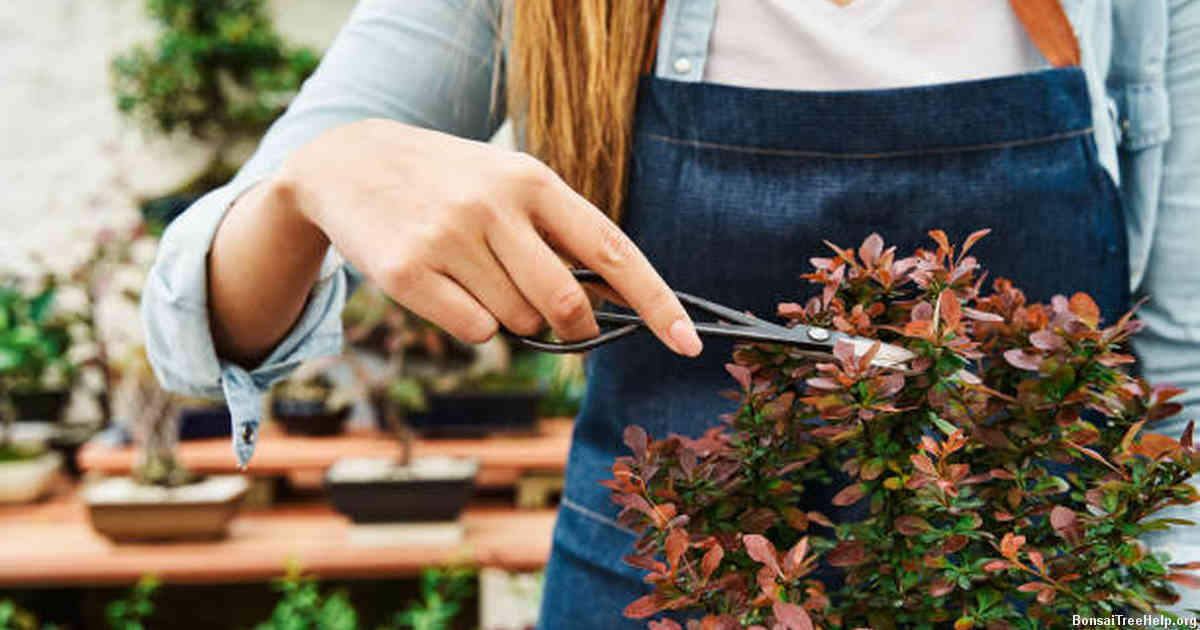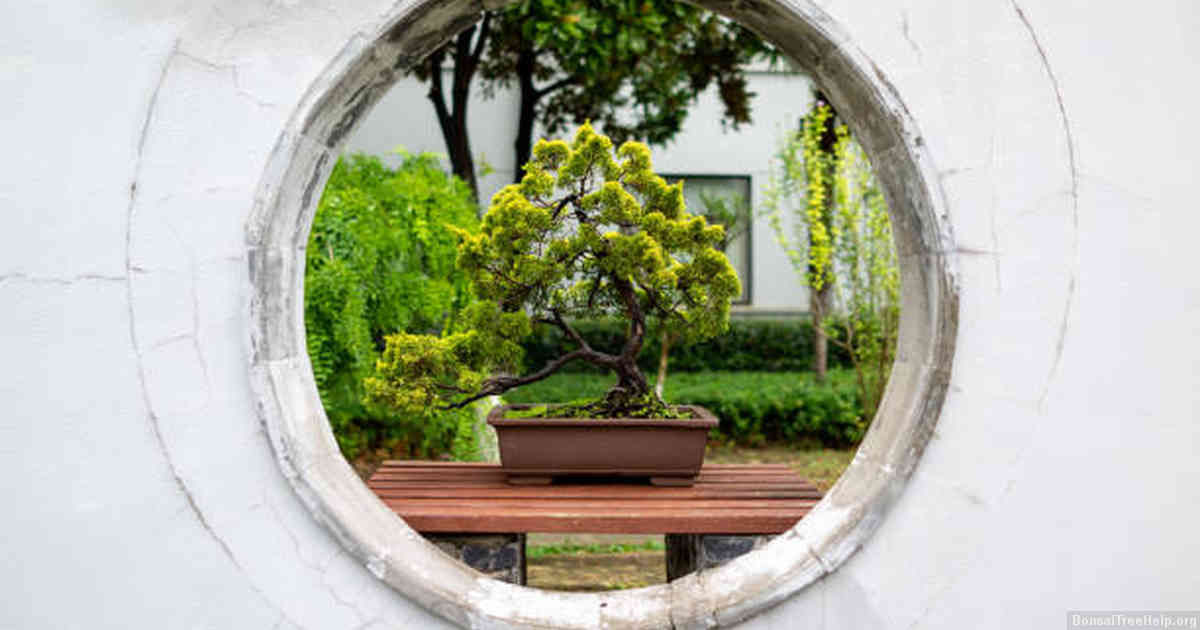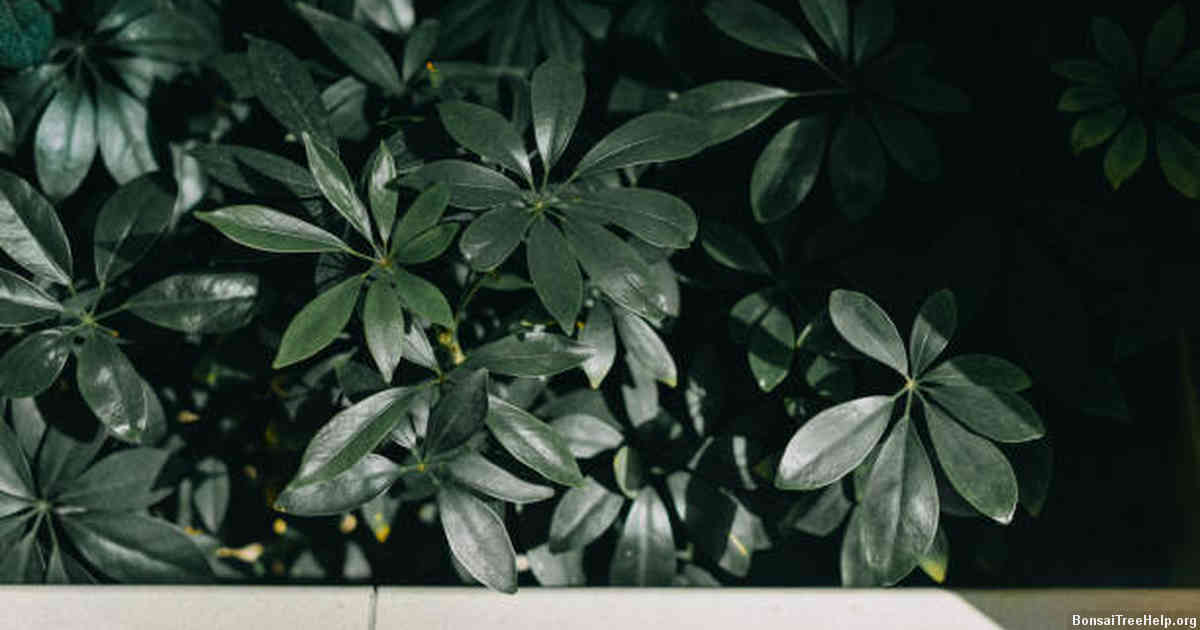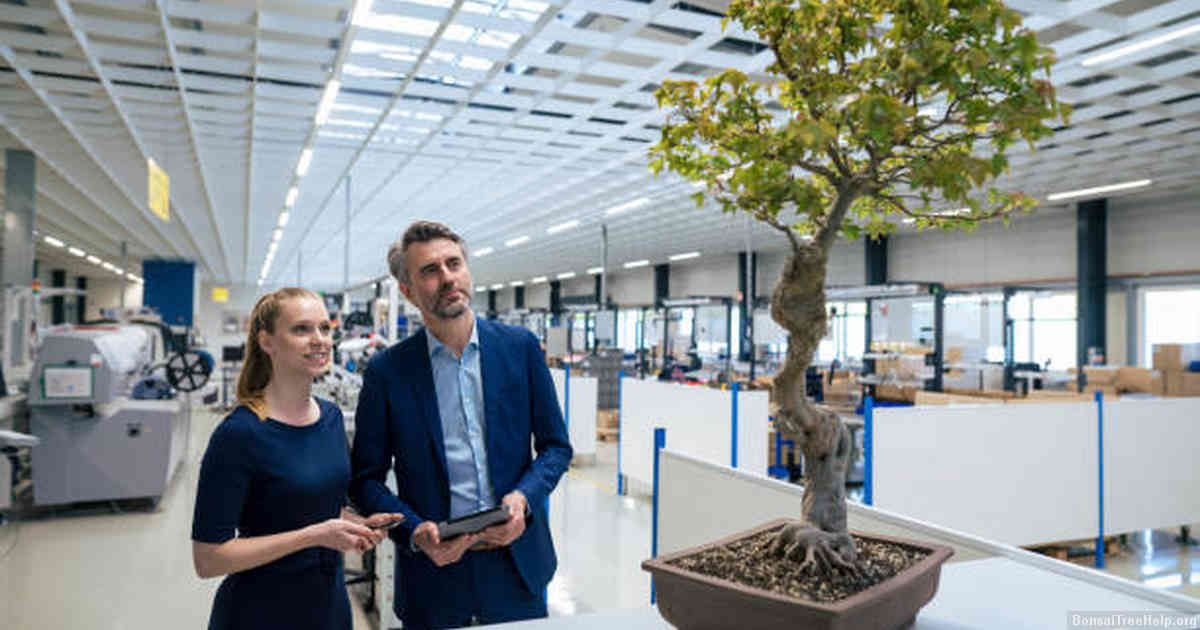
When trimming a bonsai tree, it’s important to understand the basic principles of trimming and pruning. The best time to do so is in early spring or late fall when new growth has slowed or stopped. By waiting until then, you give your bonsai ample time to recover from any pruning before needing to adapt again to the onset of a new growing season. Trimming off unnecessary branches will also help promote healthy growth and shape as well as open up light sources for other more desirable branches and leaves. Prune little by little over several sessions so as not to shock the system of your bonsai with too much change at once. When trimming individual branches or needles, remove the amount that seems most appropriate – it takes practice with scissors or shears to develop a good eye for this skill.
Contents:
- Understanding Bonsai Tree Care
- Factors to Consider When Trimming Your Bonsai
- Signs That Indicate Trimming is Necessary
- The Best Time of Year to Trim Your Bonsai Tree
- How Often Should You Trim Your Bonsai Plant?
- Tools and Techniques for Pruning a Bonsai Tree
- Maintaining Adequate Growth After Trimming
Understanding Bonsai Tree Care

When it comes to caring for a bonsai tree, proper knowledge is essential in order to keep the plant healthy and looking its best. As with any tree species, timing is important when pruning or trimming, but with the compact size of the bonsai, understanding how often and when maintenance should be done is even more critical.
Maintaining a balance between aggressive pruning of branches and leaves while encouraging growth can help give your bonsai that classic “look” associated with Japanese gardens. Consistent care is needed as each part of the plant will require different types of attention depending on the time of year; roots may need re-potting and wiring for branch structure might have to be adjusted frequently.
Watering and fertilization routines must also be closely monitored – too much water can lead to root rot or fungus infections just like too little water can cause wilting or discoloration. Similarly, knowing what type of soil mix will most benefit your particular species along with recognizing signs of insect infestation before they become serious problems are both necessary elements for effective bonsai tree care.
Factors to Consider When Trimming Your Bonsai

Trimming a bonsai tree requires careful consideration. With the right amount of time and attention, you can keep your bonsai looking its best. Before beginning to prune or shape your tree, there are several factors that need to be taken into account.
The first factor is the age of the tree. For older trees, less frequent pruning may be appropriate as vigorous trimming can weaken them over time. Younger trees on the other hand often require more frequent and intense trimming in order to keep them from growing too large for their containers. In addition to age, it is important to consider how much light and water the tree receives when deciding when and how often it should be trimmed. Trees with higher levels of sunlight may need more frequent trimming than those exposed to less light. The same principle holds true for watering – if the tree has been recently watered, then it likely does not need additional trimming immediately after irrigation.
Another factor influencing pruning decisions is climate; bonsais grown in colder climates tend to have longer dormancy periods during which less intensive maintenance such as shaping or wiring are necessary while those kept in warmer climates may require more regular upkeep year-round in order stay healthy and vibrant. Different varieties of bonsai will also vary in terms of their optimal timing for trimming – seeking out advice specific to whichever type of bonsai you own can help guide decision making around routine maintenance activities like pruning.
Signs That Indicate Trimming is Necessary

If you own a bonsai tree, regular trimming and pruning will be necessary to keep your plant healthy and looking its best. While it might seem counterintuitive to cut off the branches of your beloved tree, it is actually beneficial for growth in the long run. Identifying when and how often your specific type of bonsai should be trimmed can sometimes be tricky, so here are some signs to help you determine if it’s time to trim.
One way to tell if your bonsai needs pruning is by examining the shape of the tree. If there are any parts that look lopsided or top-heavy, then clipping off some of those portions can balance out the appearance and create a more aesthetic form for your plant. Keeping an eye on new growth can help you figure out when to begin trimming; if certain branches have become too tall or spindly compared to others, cutting them back will help ensure uniformity amongst all levels of foliage.
Another factor that can indicate that trimming is necessary is outdated foliage which may appear pale yellowish-green in color compared with brighter leaves which indicates healthiness. Removing this dead vegetation will make room for newer healthier shoots while promoting better circulation throughout the entire plant structure. Pay close attention during periods such as autumn where leaf shedding occurs naturally; these new areas may need additional shaping since they have now been revealed after shedding their leaves.
The Best Time of Year to Trim Your Bonsai Tree

The best time of year to trim your bonsai tree is the early spring months. This is the season when new growth starts to appear, so it is a great time for pruning and shaping. During this period, buds start opening up on the branches and leaves begin to spread out. Once you see this happening, you can begin cutting back any excess foliage or dead wood in order to create a more attractive form.
It’s important not to do too much pruning at once, as over-trimming can lead to stunted growth and leave your plant weakened. Instead, focus on one section of the tree at a time and only remove what needs to be cut off. If possible, try to match the shape of your cuts with the natural curves of your bonsai’s trunk and branches. Take care not to damage any live material – make sure every cut is cleanly done so that no rotting will occur later down the line.
Remember that each species requires different amounts of pruning at different times during its lifecycle – be sure you know exactly what type of bonsai you have before getting started. With regular maintenance throughout the season though, yours should remain healthy and vibrant all year round!
How Often Should You Trim Your Bonsai Plant?

Regular trimming of your bonsai plant is essential for its optimal health and growth. However, determining how often to cut back can be tricky. The specific frequency needed will depend on a few factors such as species, size and age of the tree, and climate.
Generally, it is recommended to prune your bonsai at least twice a year: once during the spring season and again in late summer or early fall. During these periods you should trim or pinch off any small shoots that are growing outwards from the main branches since leaving them unchecked could eventually lead to an undesirable appearance as well as ill-health of the tree. If you’re looking to shape your bonsai more drastically then trimming may also be required at other times throughout the year depending on need – although more frequent cutting should only be done if absolutely necessary due to possible shock stress caused by excessive pruning.
For beginners it can help to inspect their plants more frequently than just twice a year so they can learn what type of maintenance each species needs; this way they can adjust accordingly when caring for their trees over time. Seasoned growers who have expertise with certain types of bonsais may choose to complete additional trimmings based on personal preference and/or style requirements for contest show pieces – no matter what though consistency is key for best results.
Tools and Techniques for Pruning a Bonsai Tree

Pruning a bonsai tree is an essential component of caring for it. There are several tools and techniques available to help you maintain your bonsai tree’s shape, health and aesthetics. The most common pruning tools include shears, small saws, scissors and tweezers, but there are also specialized tools like serrated cutting knives. It’s important to select the right tool for the job at hand; larger branches should be cut with saws or shears while smaller shoots can be snipped off with scissors or tweezers.
The Japanese art of bonsai involves more than just trimming away branches and leaves though; careful pinching is used to shape the foliage of many species. This technique involves using fingers or tweezers to pluck out smaller growths near branch tips as well as selectively pruning back certain areas with scissors or other cutting implements in order to achieve a desired effect. This type of sculpting can take time and precision to master, but when done correctly can produce stunning results in terms of aesthetic appeal.
Different types of bonsai trees require different amounts of pruning depending on their size, age and species-specific traits like leaf texture or branch shape. Species that need frequent trimming such as junipers should ideally be trimmed once every one or two months while older specimen may require only occasional maintenance – typically twice per year at minimum – in order not to damage them too much from over-pruning or irregular shaping attempts. Ultimately, properly pruned bonsais tend look natural yet still meticulously cultivated by human hands – allowing for a beautiful blend between nature and artistry.
Maintaining Adequate Growth After Trimming

Once the bonsai has been expertly trimmed, it is imperative to nurture its growth in order to make sure your tree maintains its health and vigor. It’s important to provide adequate hydration after trimming. Make sure you water daily until the soil is damp, not soggy. This will prevent moisture stress on newly exposed roots and branches. If a particular part of the bonsai isn’t growing as expected, use a fertilizer specifically designed for potted trees; this will help encourage new buds and leaves.
As far as light goes, give your tree at least 6 hours of direct sunlight each day, preferably outdoors or in an area with lots of bright natural light. Keep in mind that while sun exposure helps promote healthy development and foliage coloration, too much can be detrimental–so make sure your bonsai doesn’t get overexposed. As a rule of thumb, keep younger plants (e.g. 1-3 years) inside during hot summer months so they don’t get dried out too quickly by strong sunlight and windy conditions outside.
If you are dealing with any pests like mealy bugs or spider mites, take care to quarantine affected areas of your bonsai from other healthy plants to avoid cross contamination. You can also apply horticultural oil which serves as an effective way to kill off insects without damaging the sensitive foliage of the plant itself.
Leave a Reply